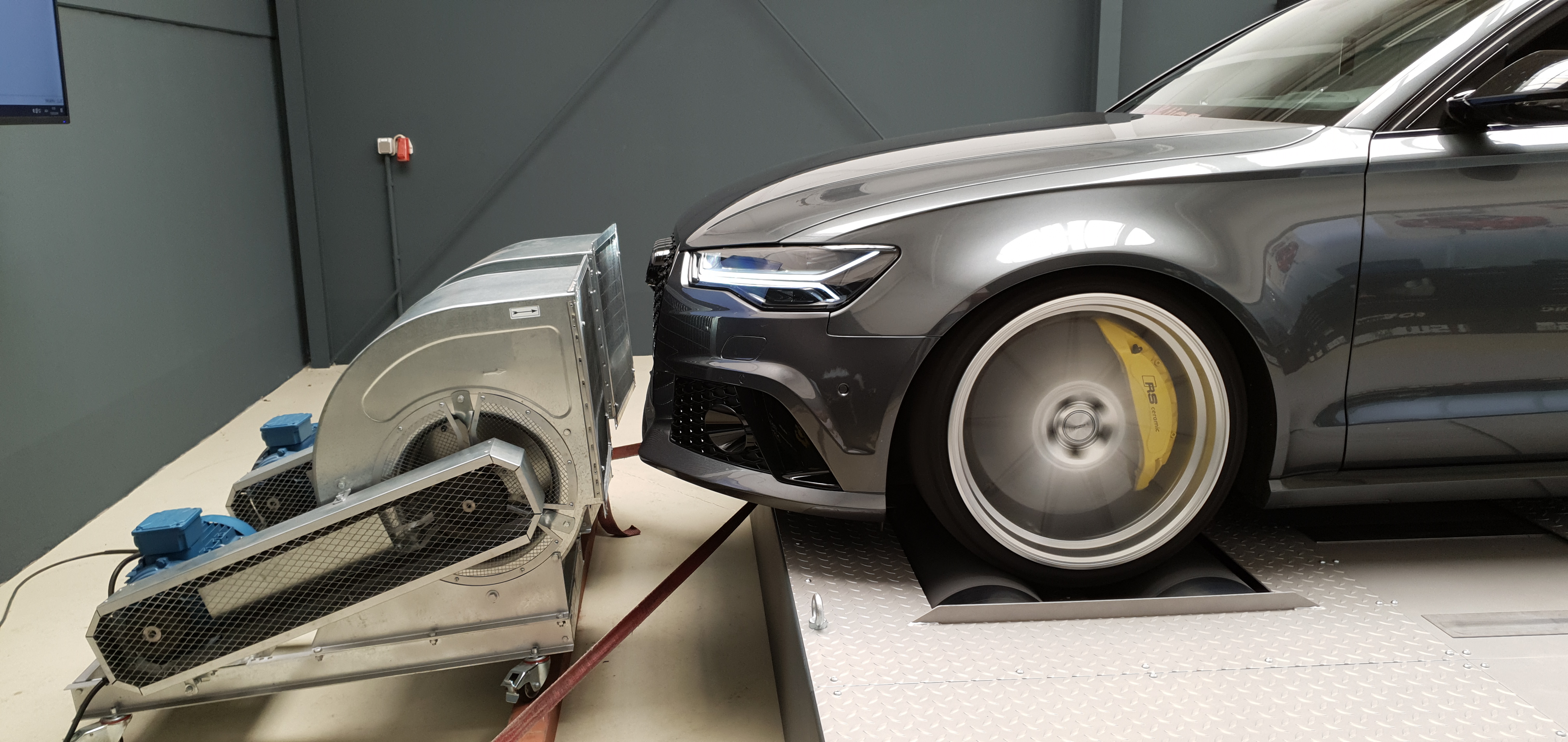Performance test bench

Measuring methods for engine torque and engine power
The problem of testing internal combustion engines using stationary dynamometers is quite complex. To correctly measure power and torque, several factors must be taken into account. Depending on the purpose and the way in which the dynamometer is used, one can basically distinguish between three solutions, namely the inertial measurement (during acceleration), the measurement in load mode (during acceleration) and the measurement with the balance of forces (decelerated). .
Inertial measurement (measuring procedures possible on the performance testing system and on the inertial test bench)
The inertial measurement consists of first accelerating the car on the chassis dynamometer and then, after disengaging the clutch, waiting until the car comes to a standstill without applying the brake. The loads on the engine are represented by the roller mass, the rolling resistance and the resistance of the drive unit. The measurement time is around 10 to 30 seconds under full load and a few minutes for coasting on the dynamometer to a standstill. The power and torque are measured as functions of the acceleration of the vehicle on the rollers (power, torque on the wheels) and its deceleration (power and torque loss). The sum of these makes up the result, which represents the engine power and engine torque.
Measurement in dynamic load mode (measuring procedure possible on the performance testing system)
The measurement in this mode is similar to inertial mode, with the difference that the eddy current brake simulates a greater load. The load index is a percentage value and is set by the user in the test bench program.
Measuring in dynamic loading mode has some significant advantages compared to inertial measurement:
The user can choose the load himself depending on the type and power of the engine being examined.
The measurement time can be extended.
It is possible to load powerful turbo engines correctly in order to “build up” the correct recharge.
The measurement procedure in dynamic loading mode is as shown below:
In the dynamic load mode, the additional load should be set in the test bench program before the start of the measurement (this means increasing the apparent inertia of the dynamometer by loading the vehicle with an eddy current brake so that the torque is not compensated for). This procedure allows the load on the engine power to be adjusted more precisely, e.g. to “build up” and maintain the correct recharge.
After determining the load index, the actual measurement procedure is identical to that in inertial mode.
The problem of testing internal combustion engines using stationary dynamometers is quite complex. To correctly measure power and torque, several factors must be taken into account. Depending on the purpose and the way in which the dynamometer is used, one can basically distinguish between three solutions, namely the inertial measurement (during acceleration), the measurement in load mode (during acceleration) and the measurement with the balance of forces (decelerated). .
Inertial measurement (measuring procedures possible on the performance testing system and on the inertial test bench)
The inertial measurement consists of first accelerating the car on the chassis dynamometer and then, after disengaging the clutch, waiting until the car comes to a standstill without applying the brake. The loads on the engine are represented by the roller mass, the rolling resistance and the resistance of the drive unit. The measurement time is around 10 to 30 seconds under full load and a few minutes for coasting on the dynamometer to a standstill. The power and torque are measured as functions of the acceleration of the vehicle on the rollers (power, torque on the wheels) and its deceleration (power and torque loss). The sum of these makes up the result, which represents the engine power and engine torque.
Measurement in dynamic load mode (measuring procedure possible on the performance testing system)
The measurement in this mode is similar to inertial mode, with the difference that the eddy current brake simulates a greater load. The load index is a percentage value and is set by the user in the test bench program.
Measuring in dynamic loading mode has some significant advantages compared to inertial measurement:
The user can choose the load himself depending on the type and power of the engine being examined.
The measurement time can be extended.
It is possible to load powerful turbo engines correctly in order to “build up” the correct recharge.
The measurement procedure in dynamic loading mode is as shown below:
In the dynamic load mode, the additional load should be set in the test bench program before the start of the measurement (this means increasing the apparent inertia of the dynamometer by loading the vehicle with an eddy current brake so that the torque is not compensated for). This procedure allows the load on the engine power to be adjusted more precisely, e.g. to “build up” and maintain the correct recharge.
After determining the load index, the actual measurement procedure is identical to that in inertial mode.
